Overview
-
Someil de Terre
Wind Burial - Fern in the Wind', 'Cremation - Egg in the Fire', 'Water Burial - Stone at the Bottom of the Water' and 'Bird Burial - Bird Woman's Head', were the four parts to Yoshimoto Daisuke's 'Funeral Series' performed between 1983 and 1987. With this addition of 'Someil de Terre', it became a 5-part series. Original concept: 'Stanislav de Gala Soshaku Kōfujin' [Madame de Stanislav de Gala Mastication]
- Daisuke Yoshimoto Butoh Dance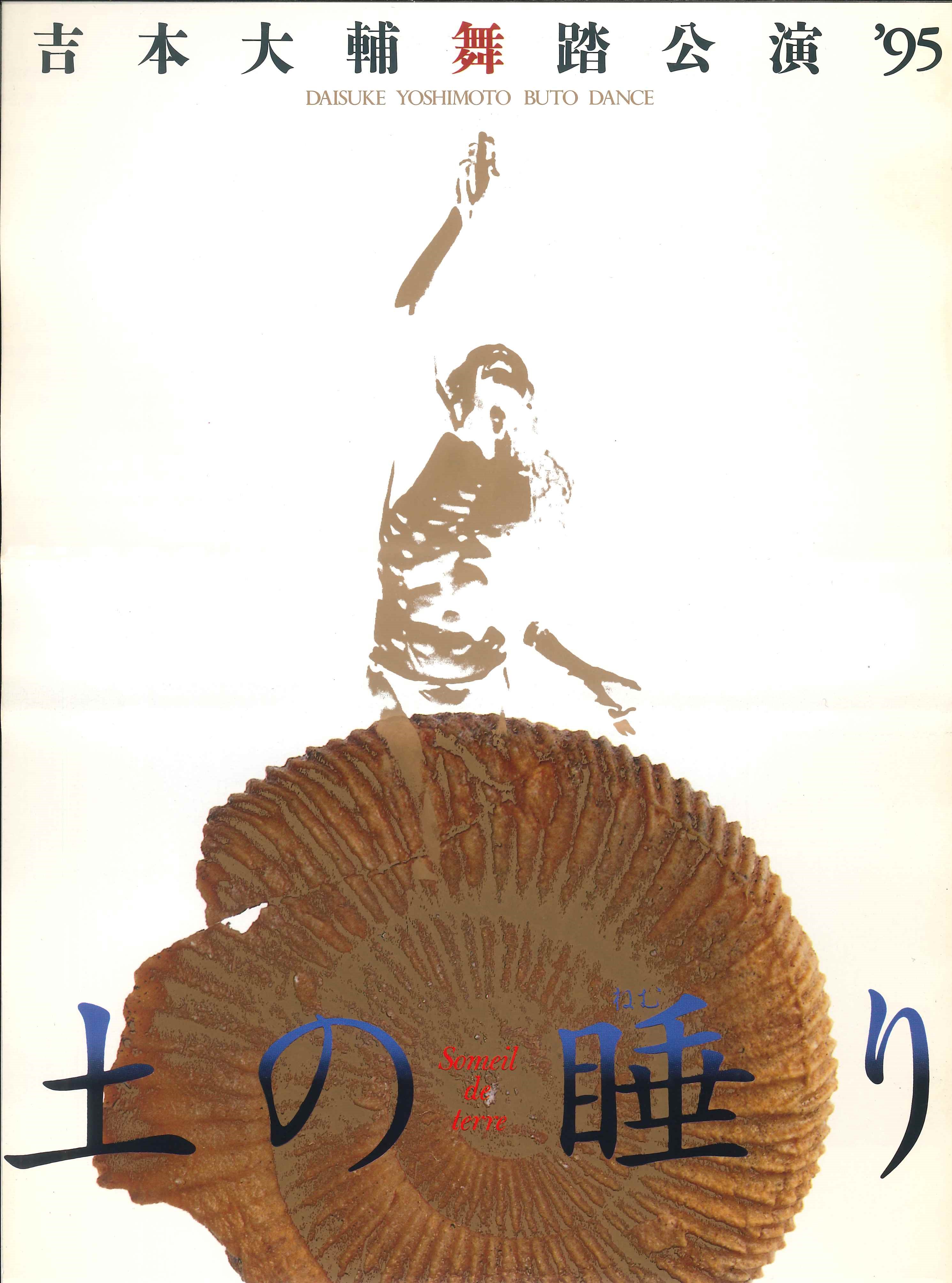
- Performer(s)
- Daisuke Yoshimoto
- Director/Choreographer
- Daisuke Yoshimoto
- Venue
- Sogetsu Hall
- Year performed
- 1995
-
Soft Moon
"Has Humankind really lost Memory
of when the soft Moon approached the Earth
Drawing out all kinds of hard protrusions
and Revealing the Earths True Nature"
From the Katsuko Orita Dance Performance. The brains behind Orita's work during the 1980s were:
Script - Yuichi Konno ; Artwork - Tetsuhiko Maeda ; Lighting - Yuji Sawada.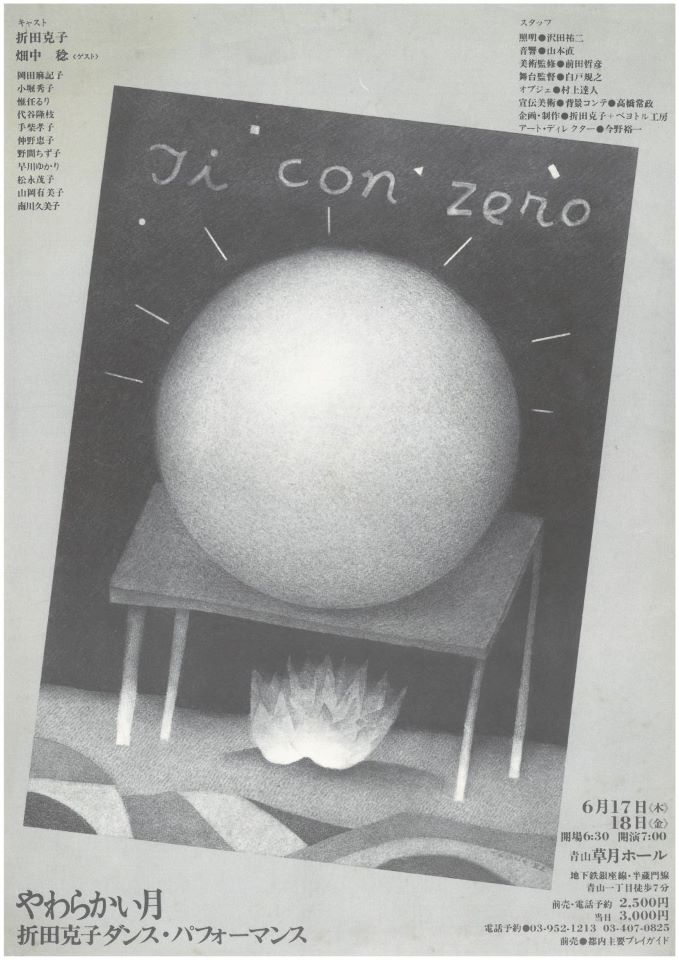
- Performer(s)
- Midori Ishii and Katsuko Orita Dance Studio
- Director/Choreographer
- Katsuko Orita
- Venue
- Sogetsu Hall
- Year performed
- 1982
-
The Skylark and the Lying Buddha (Yokohama version)
The Skylark chirps and flies straight towards the heavens, while the Lying Buddha rests on his side with his chin propped up on his hand and smiles, and the two cross each other like a Christian cross... The theme revolves around the perspective of the body as an instrument for measuring the world. (From the flyer)
This is the new Yokohama version of "Hibari to Nejaka" (The Skylark and the Lying Buddha), which was met with great enthusiasm after its premiere in 1983 and during its European tour in 1985.
This version was also performed in Yokohama (as part of Yokohama Art Wave 1989) on 6-7 October, and in Osaka on 10 October.
-300th Anniversary of the Birth of Jakuchu Ito / Hibari Misora Memorial Performance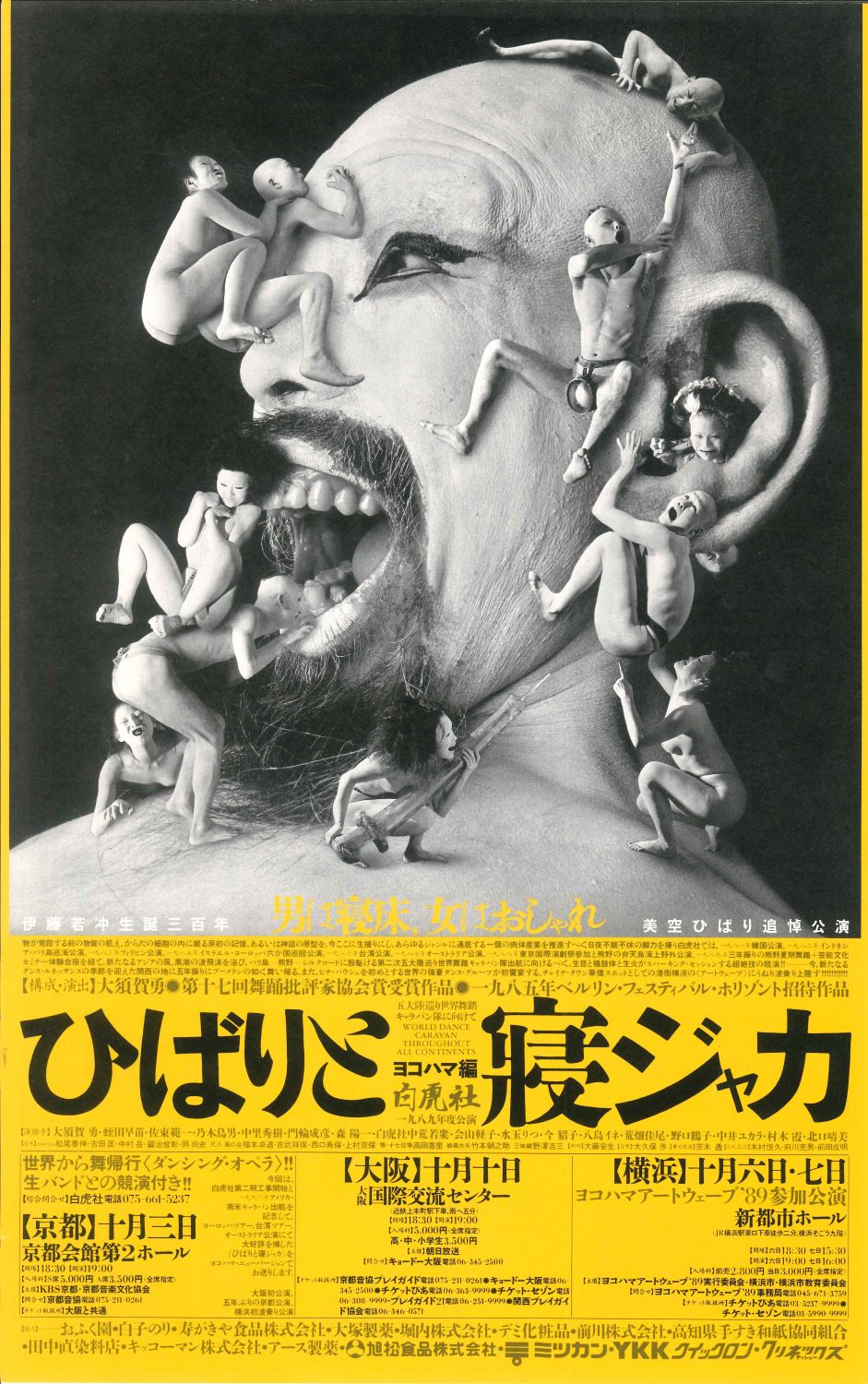
- Performer(s)
- Byakko-sha
- Director/Choreographer
- Isamu Osuka
- Venue
- KyotoKaikan No.2 hall
- Year performed
- 1989
-
The Skylark and the Lying Buddha (in Melbourne)
Australian premiere of Byakko-sha's signature piece, "Hibari to Nejaka" (The Skylark and the Lying Buddha), which had its world premiere in 1983. In 1985, it was awarded the 17th Dance Critics Society of Japan Award for its "contribution to the revitalisation of performing arts by rethinking 'noise' and 'foolishness' from a modern perspective" during its Tokyo performance. It was also enthusiastically received during its European tour.
The video is a compilation of highlights.
It was performed 7 times in September, 1987.
-Spoleto Melbourne Festival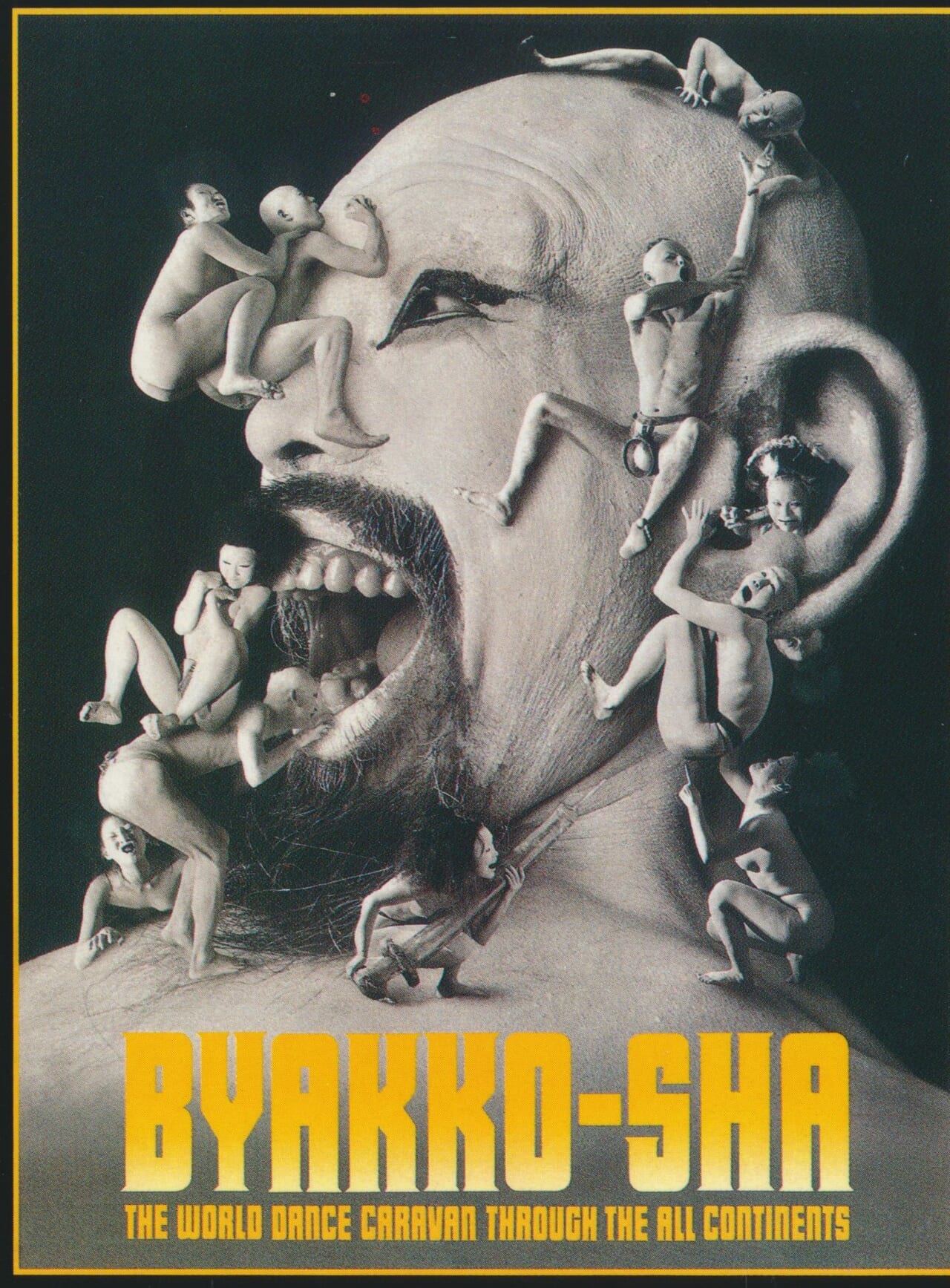
- Performer(s)
- Byakko-sha
- Director/Choreographer
- Isamu Osuka
- Venue
- Victorian Arts Centre Playhouse Theatre
- Year performed
- 1987
-
The Skylark and the Lying Buddha (Butoh Festival ’85)
A vivid recreation of primitive creatures such as elephants, crocodiles, and demons - beings that know nothing of modernity or the self - living and playing in a forest after the rainy season. (From the flyer)
Kyoto-based Byakko-sha's first performance in Tokyo. "Hibari to Nejaka" [The Skylark and the Lying Buddha] was first performed in 1983, and went on to become one of Byakko-sha's signature pieces, performed all over the world, showcasing the wild energy of their early work.
- Butoh Festival '85: Collection of Butoh Confessions - Seven Seasons and Castles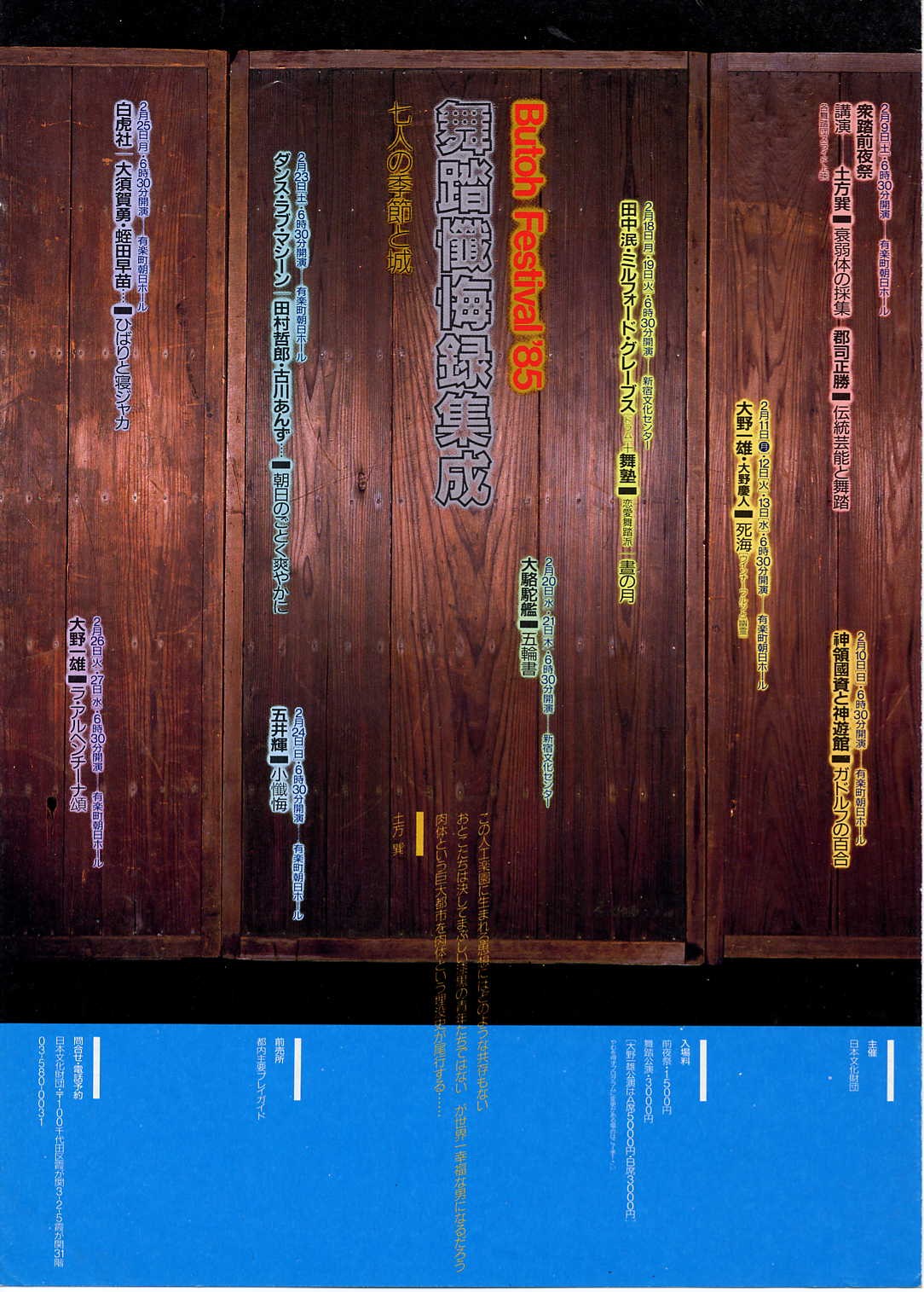
- Performer(s)
- Nippon Cultural Centre
- Director/Choreographer
- Isamu Osuka
- Venue
- Yurakucho Asahi Hall
- Year performed
- 1985
-
Sinking Waterfall: A Collaboration of Drums, Sculpture, Light and Butoh
In the ancient history of butoh, demons, supernatural beings and dragons have come and gone. Do they live deep within our bodies today? The body is a mysterious and strange container. Go up the river of memory and find a glowing scale at the bottom of a waterfall. At this signal, the fight between the Water Dragon and the Fire Dragon begins. Such a scene of chaos is the sole domain of the Butoh. Man after man passes by. Tossed around by love, Narukami Shonin climbs a waterfall and becomes a dragon. It is the beginning of a new festival.
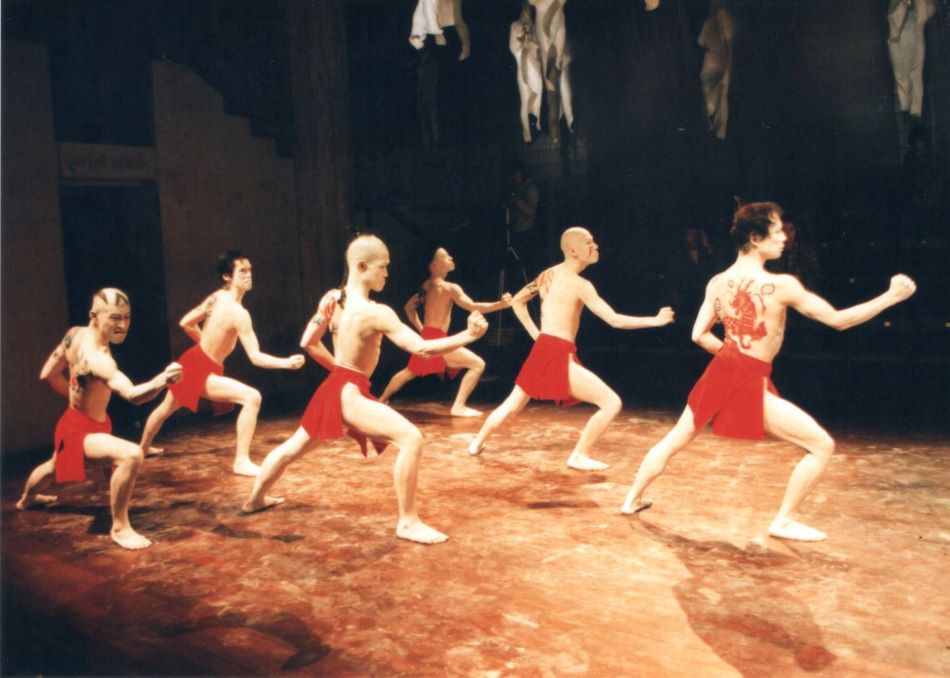
- Performer(s)
- Yukio Waguri + Kozensha
- Director/Choreographer
- Yukio Waguri, Jinishi Hiranuma
- Venue
- P3 art and environment
- Year performed
- 1995
-
SHOOT JEEZ MY GOSH
This butoh performance is inspired by Henry Darger’s fantasy world that juxtaposes innocence with violence. Sounds from real battles found on the Internet are contrasted with iconic corporeal movements that represent innocence. The work attempts to pose a question to the feeling of ambivalence towards systematic violence of belief that imposes powerlessness, and simultaneously reminds of brutal terror that characterizes our epoch.
The birth to kill
Build to break down
Existence
To be erased
To be pasted
The invisible enemy
Imperceptible voice
The other side of the filter
The inside of the monitor
In order to be fooled
In order to deceive
Endless game of
The world
Past Performances
2019: Rabbithole, Athens, Greece / Baltimore, Boston, Asheville, Chicago, USA
2018: Festival FiBUTOH, Santiago+Valparaiso, Chile / Tokyo Butoh Circus, Tokyo, Japan
2017: Serendipity Arts Festival, Goa, India/ Butoh College, Portland, USA / Sapporo International Butoh Festival, Sapporo, Japan
2016: Casa del Lago, Mexico / Gati, New Delhi, India
2015: DOCK11, Berlin, Germany / KRT Festival, Krakow, Poland / Huashan 1914, Taipei, Taiwan / Sala Crisantempo, Sao Paulo, Brazil
15 Nov 2014: Tatwerk, Berlin, Germany (Premiere)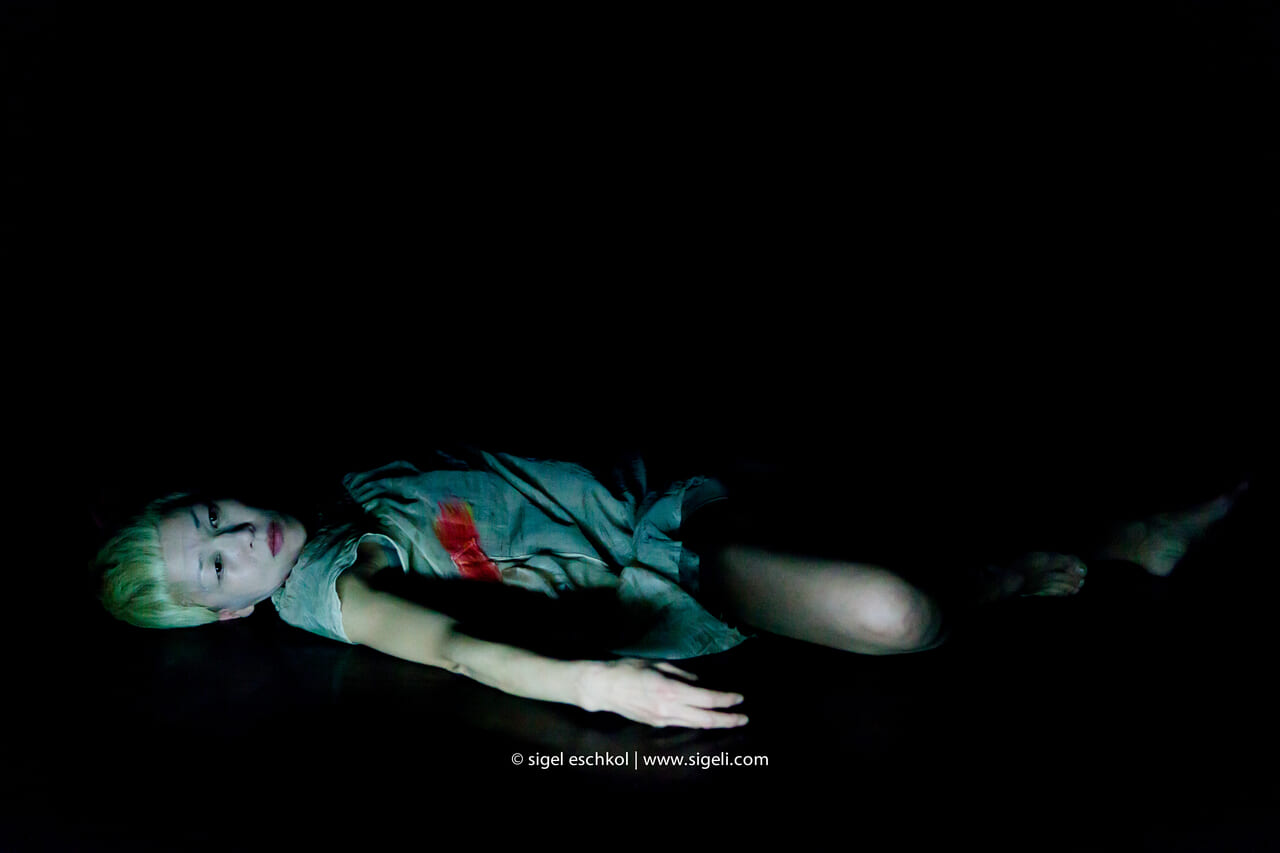
- Performer(s)
- Company cokaseki
- Director/Choreographer
- Yuko Kaseki
- Venue
- DOCK11
- Year performed
- 2015
-
Shinshoku
A loosely structured series of solo scenes in which one performer dances to a text read by the other, interspersed with duets where both dancers move to sounds and music. It was first premiered at the Drama Studio in Kanazawa Civic Arts Village in February 2024, and this new version was specially adapted for this venue. The word "Shinshoku" was coined to describe this project, which explores the possibility of whether the body can exist independently from or merge with another’s physical and personal space.
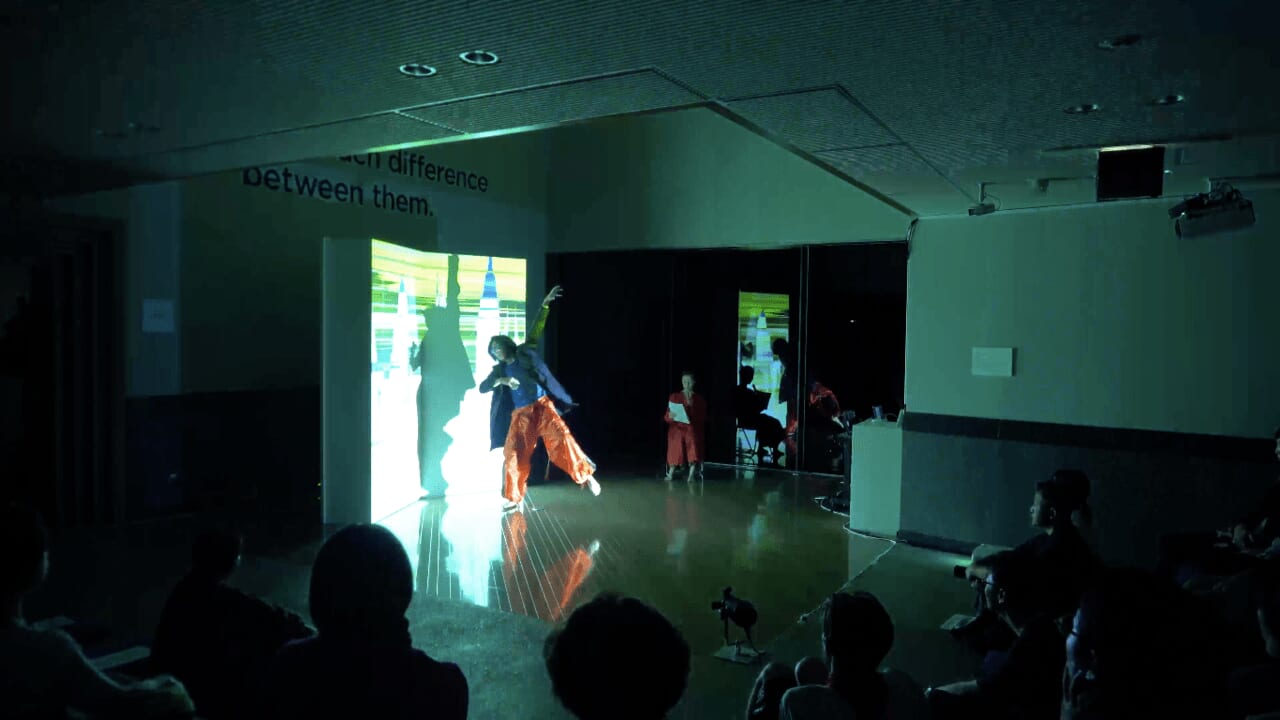
- Performer(s)
- Mitsutake Kasai × Naoka Uemura
- Director/Choreographer
- Mitsutake Kasai, Naoka Uemura
- Venue
- Kinosaki Literary Museum
- Year performed
- 2024
-
Shinjuku Station Rush Hour Tango and others (from ‘Clown’s Lane’)
Shinjuku Station Rush Hour Tango', created in the 1970s, is one of Yoneyama Mamako's best known works. A scathing satire of people passing through the station in a 'pankago' - her own original form of performance combining pantomime with witty song and narrative.
The video is from the 1984 solo mime recital 'Clown's Lane', which included the following pieces: 'Tako o Ageru Kodomo' [Child Flying a Kite], 'Onna no Seicho' [Growing Woman], 'Zō no Hanashi' [Elephant Story], 'The Button War', 'Shinjuku Station Rush Hour Tango', 'Sora o Tobu Otoko' [The Flying Man] and 'Piero no Tama' [The Clown's Balls].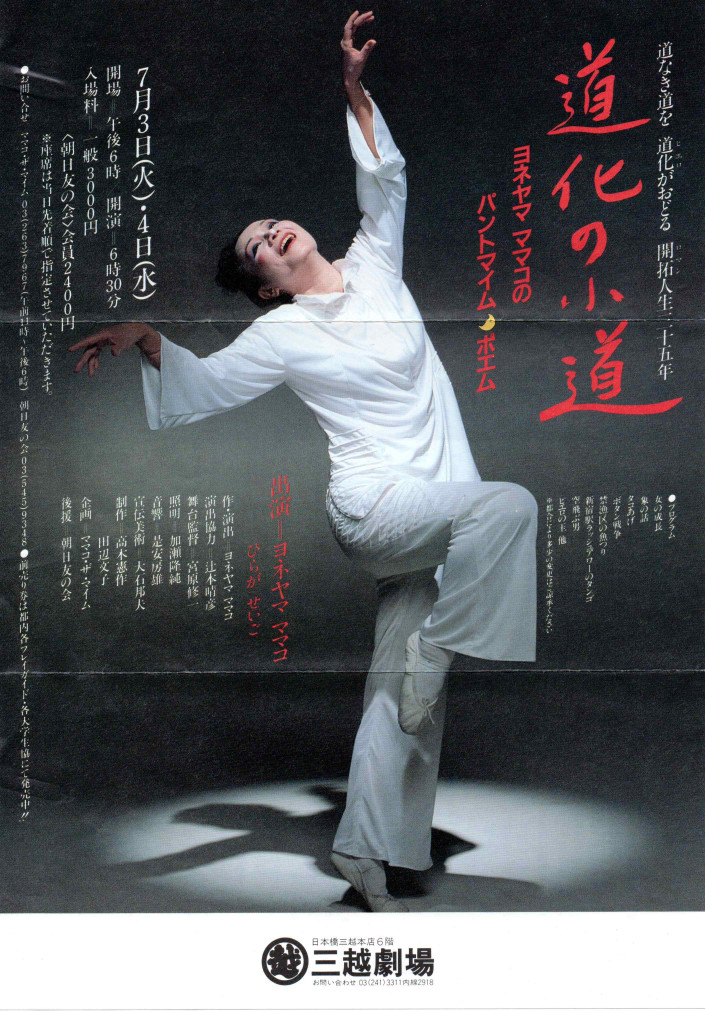
- Performer(s)
- Mamako Yoneyama
- Director/Choreographer
- Mamako Yoneyama
- Venue
- Mitsukoshi Theater
- Year performed
- 1984
-
Shining City of the Moon God
Documentation of "Shining City of the Moon God", performed by Byakko-sha alongside a grand musical ensemble for Kumano Spark (Kumano International Art Festival) for which Byakko-sha's founder, Isamu Osuka, served as artistic director. Produced exclusively for the festival, this work was directed by Osuka. During the festival, whose theme was "integration with nature", a temporary 130-meter bridge was constructed to Bentenjima [Benten Island] in Nachi Bay (Wakayama Prefecture), creating an open-air theatre on the sea with the island's large rocks serving as a backdrop.
The Kumano International Art Festival was held as part of the World Resort Expo.
-Kumano Spark: Kumano International Art Festival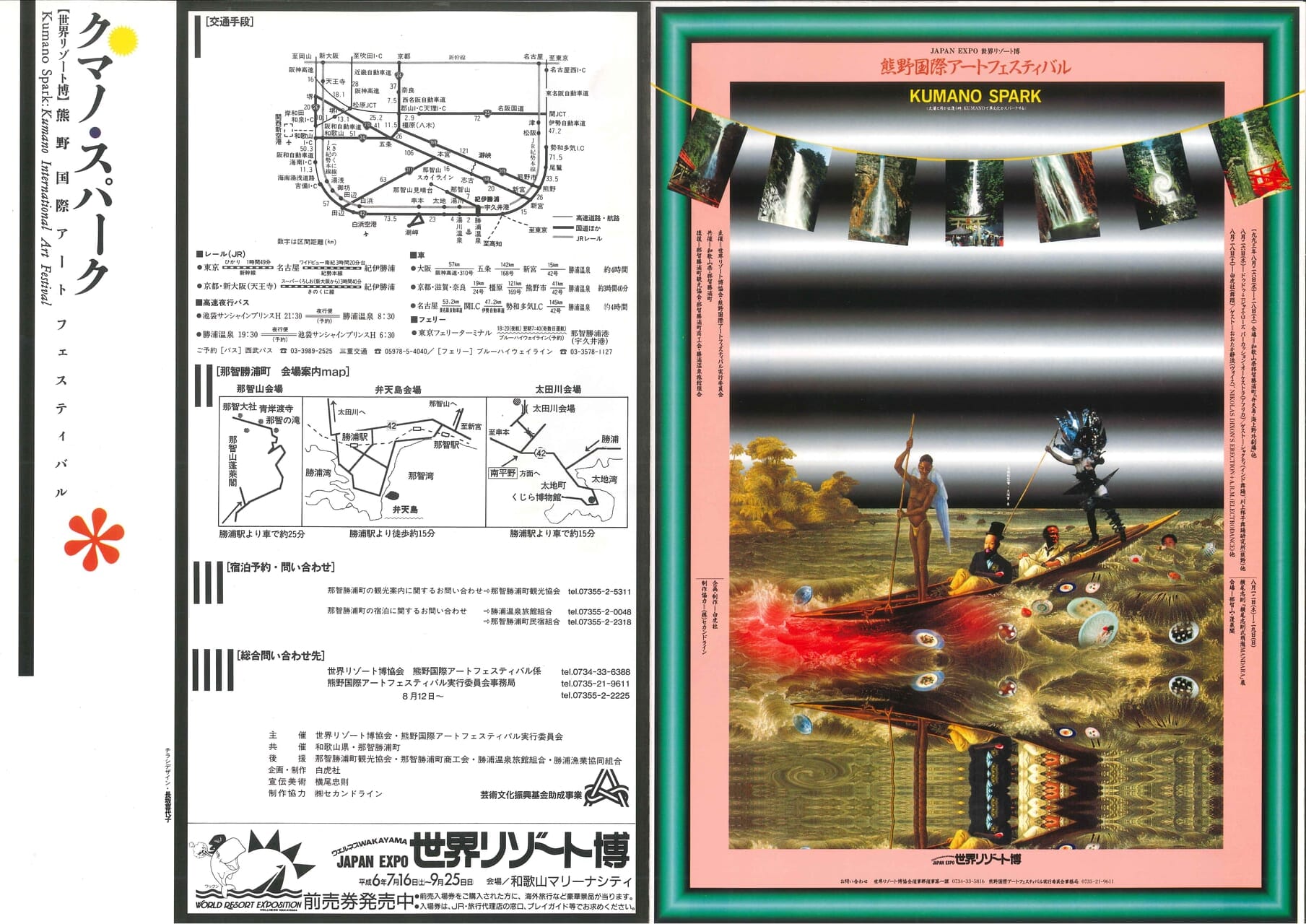
- Performer(s)
- Byakko-sha
- Director/Choreographer
- Isamu Osuka
- Venue
- Bentenjima Marine Open Air Theatre
- Year performed
- 1993
-
Küchenzigeunerin: She’s Run Off to Join the Gypsies
A commemorative performance by Anzu Furukawa in preparation for her participation in the first European butoh festival in Berlin in 1986 (organised by Künstlerhaus Bethanien), in which she was invited to perform. Five years later, in 1991, Furukawa moved to Berlin and began teaching at the Braunschweig University of Art.
-Anzu Furukawa 1986 Berlin Festival Invitation Commemorative Ball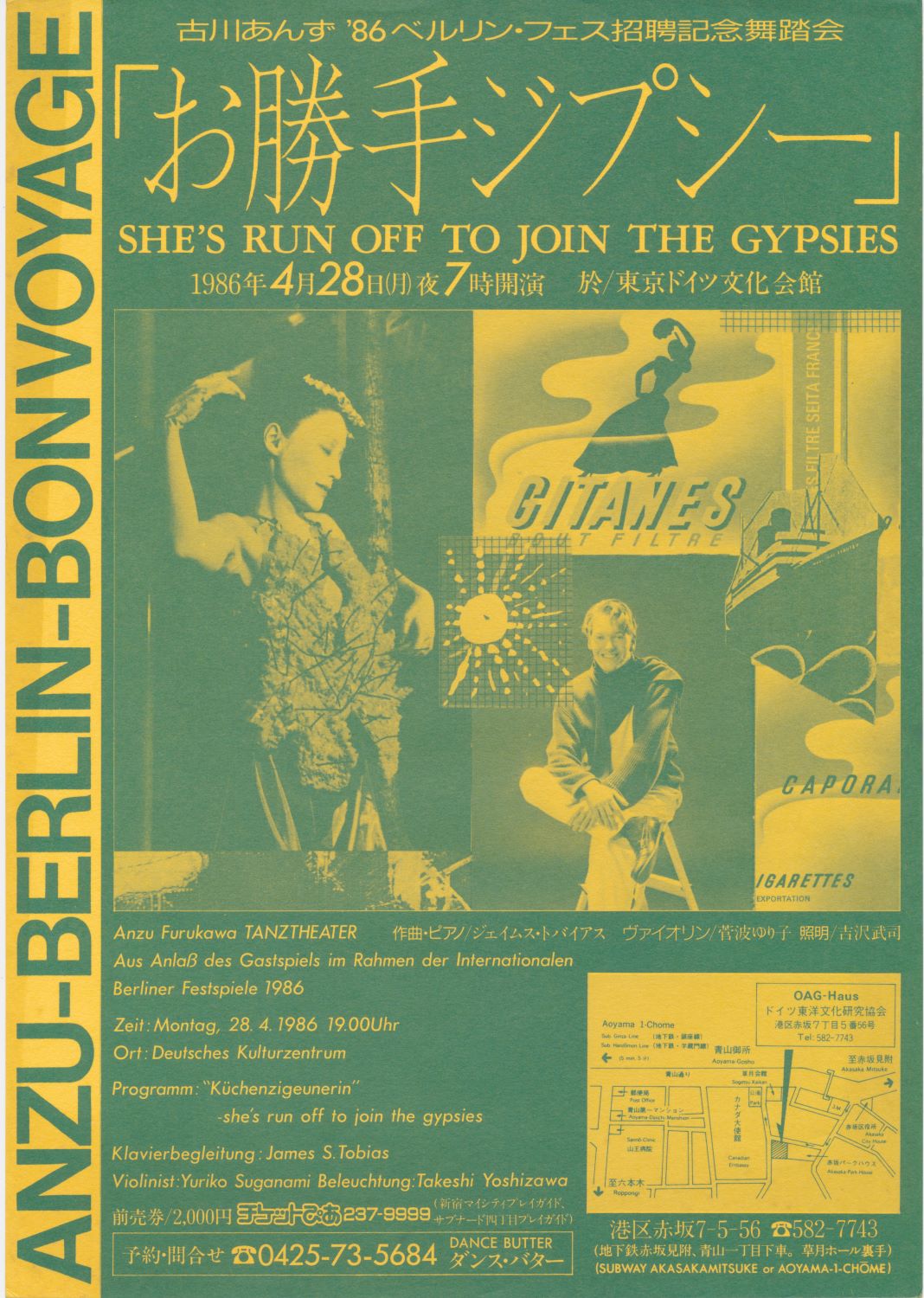
- Performer(s)
- Anzu Furukawa
- Director/Choreographer
- Anzu Furukawa
- Venue
- Goethe-Institut Tokyo
- Year performed
- 1986
-
SHE
The music consists entirely of Maria Callas and Bach arrangements. Highly acclaimed, 'she showed absolute control of the body, with incredible power and extreme fragility' (Peter Bu, Le Figaro, 7 August 1997). 'She explored every inch of the female figure, stereotyped as it has been for eternity. Everyone is brought into that moment. She tells the story of a state of mind, transforming her whole body in an astonishing way' (Du Théâtre, Autumn 1997, no. 18). The work toured 25 times across 6 countries.
-Mitsuyo Uesugi Solo Butoh Performance at the Mimos Festival Perigueux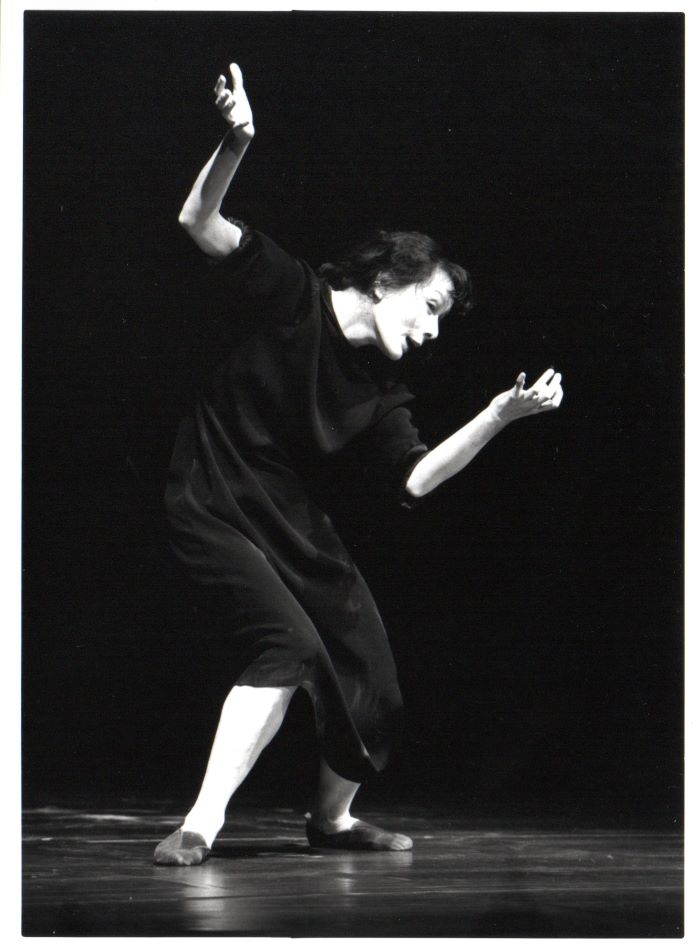
- Performer(s)
- Mitsuyo Uesugi
- Director/Choreographer
- Mitsuyo Uesugi
- Venue
- LE PALACE
- Year performed
- 1997
-
SHARANPOKA
Mitsuyo Uesugi's first solo butoh performance on returning to Japan, after working with Catherine Diverrès in France for three years. A captivating piece, she was described as capturing the space 'not with the breadth of movement, but with the difference in presence' and 'repressed movement'. 'The love (eros) within her is complete.' (Masatoshi Satō, Terpsichore News).
-Mitsuyo Uesugi Solo Butoh Performance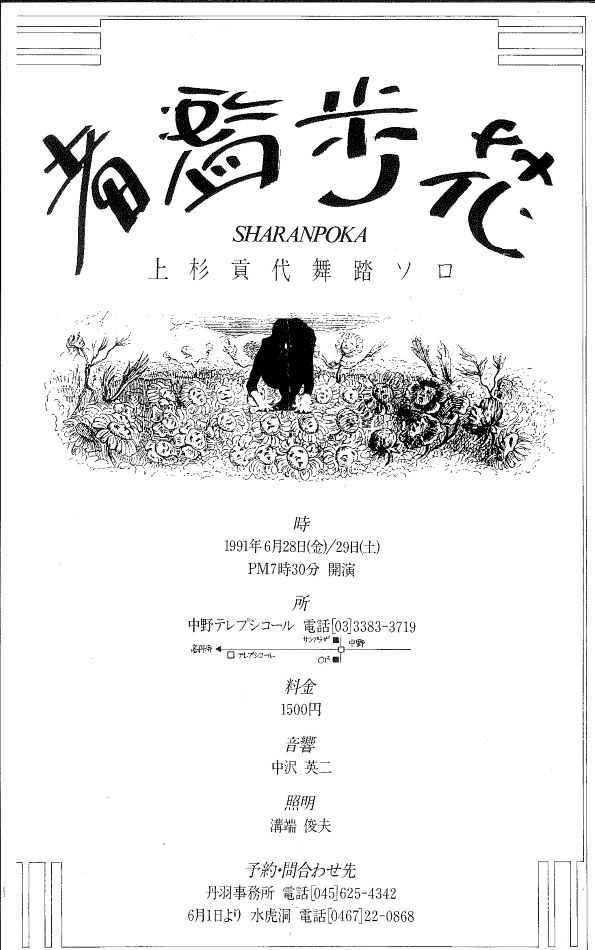
- Performer(s)
- Mitsuyo Uesugi
- Director/Choreographer
- Mitsuyo Uesugi
- Venue
- Terpsichore (Nakano, Tokyo)
- Year performed
- 1991
-
서울 (Seoul) Erotica – Ajumma’s Breast and Shape of a Peninsula
Since time immemorial, many white shadows have haunted the Japanese people. The moment we set foot in the Korean peninsula, they begin to shine brightly. These shining white shadows are not angry. We just want to quietly listen.
- Participated in the 2nd OSAKA DANCE EXPERIENCE
- Kan Katsura & Sultan Bank Butoh Performance
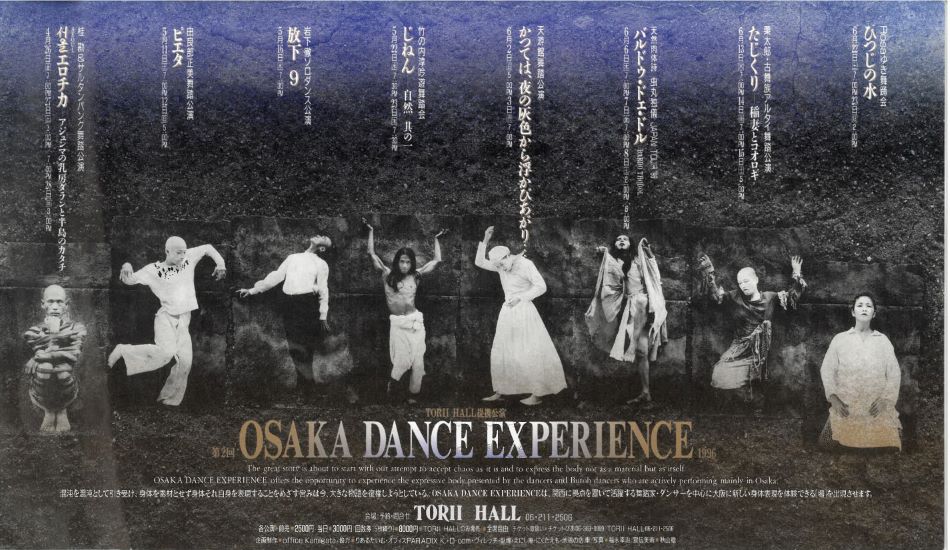
- Performer(s)
- TORII HALL
- Director/Choreographer
- Kan Katsura
- Venue
- TORII HALL
- Year performed
- 1996
-
Sea of Time
Koichi Tamano, who studied under Tatsumi Hijikata at Asbestos-kan from 1964 and was nicknamed by him as 'Nijinsky with crab legs', formed the Harupin-ha group in 1972, before moving to San Francisco in 1979 where he helped establish butoh in the USA. He continued to perform many times in Japan after emigrating, as a guest performer in Dairakudakan performances and working with the composer Kitarō on tours of Japan. 'Sea of Time' is his own piece, presented in Osaka, which included participation by some of his students from the USA.
- Koichi Tamano Butoh Performance
- Performer(s)
- TORII HALL
- Director/Choreographer
- Koichi Tamano
- Venue
- TORII HALL
- Year performed
- 1996
-
The Sea of Memoriz
When we die, we are divided into two types of people: those who leave this world with hatred, and those who let bygones be bygones and are left surrounded by pleasant memories. It seems people can in fact rewrite their memories. Two people who rewrite the memories of a bad separation can fill the hole left in their hearts, and when they leave this world, their ill feelings disappear.
- Participated in the 12.Int Tanztheaterfestival Graz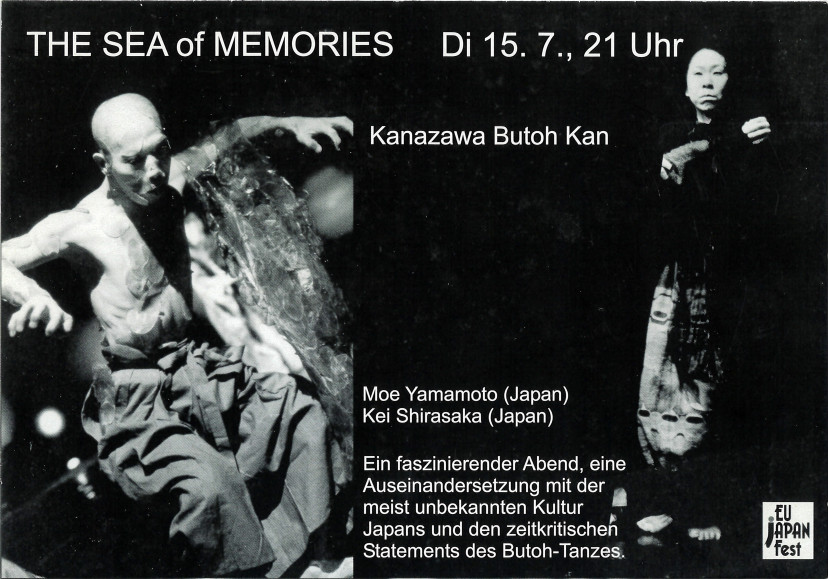
- Performer(s)
- Kanazawa Butoh Kan
- Director/Choreographer
- Moe Yamamoto, Kei Shirasaka
- Venue
- Theater im Palais (Austria)
- Year performed
- 2003
-
The School of Hard Knocks
The film travels through the urban canyons, parking decks and rooftops of New York, where choreographer Yoshiko Chuma and actor John Nesci explore the textures and architecture of the city through engagement with movement and objects. Finally, the journey leads to the natural landscape of Maine where Jacob Burckhardt’s camera captures the movements of leaves, water, light, and a raft floating in the fog. Created in 1980.
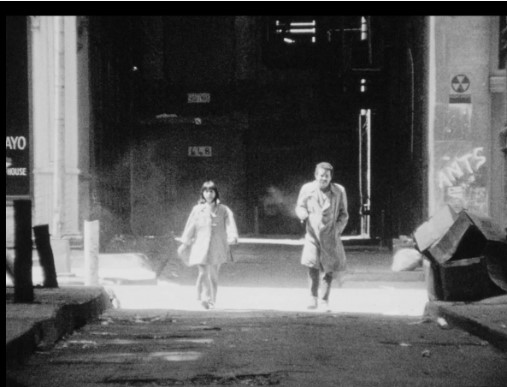
- Performer(s)
- Yoshiko Chuma
- Director/Choreographer
- Yoshiko Chuma
- Year performed
- 1980
-
Sasara mo Sara
"Sasara-mosara" means "mess" in the Hiroshima dialect. Hiroshima was destroyed by an atomic bomb in 1945. A single flash of light changed everything, as if causing an extinction. The theme of the piece is 'The past, present, and future of the atomic bomb'. The work does not depict the atomic bomb itself, but rather presents the complex emotions of sadness, hatred, fear and anger caused by the bomb, and the absurd, ongoing historical and global situations as a universal image.
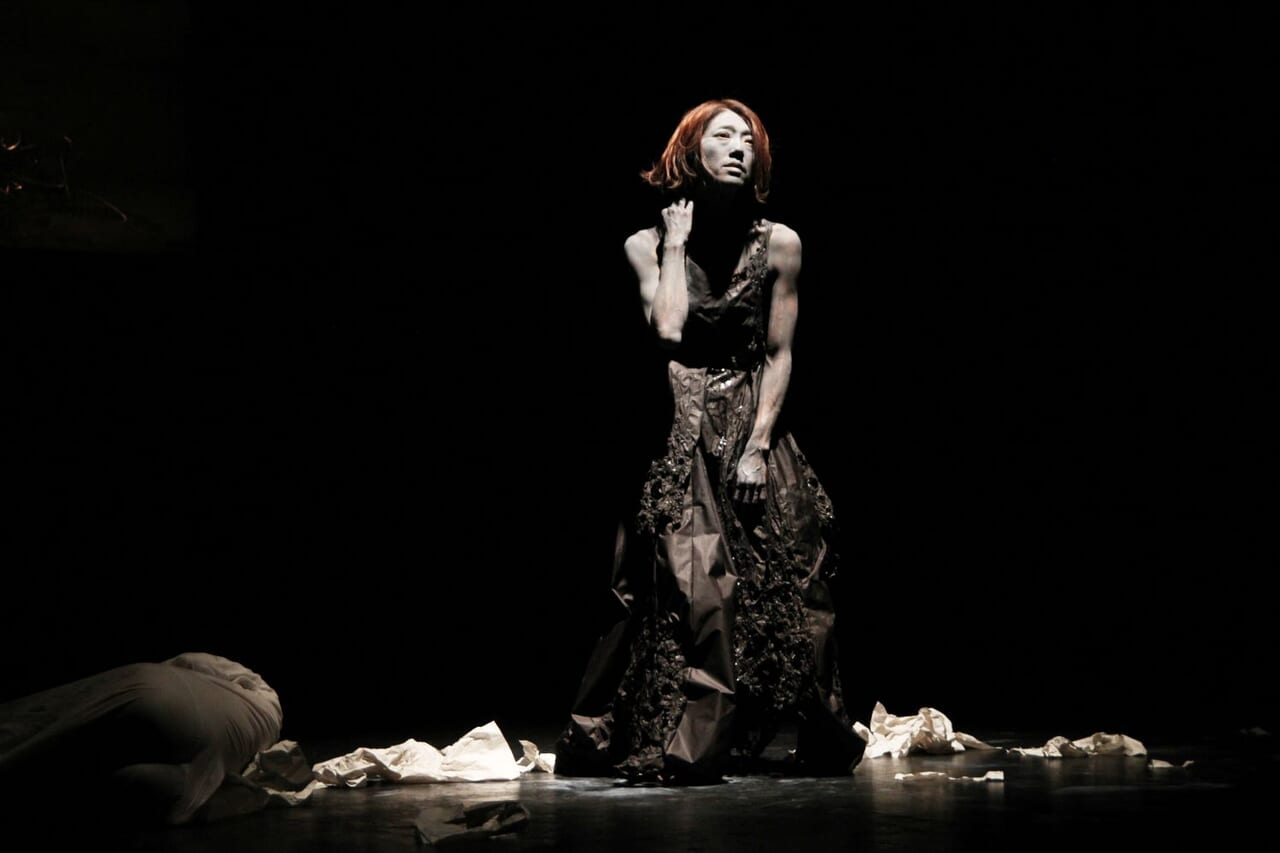
- Performer(s)
- Yuko Kawamoto
- Director/Choreographer
- Yuko Kawamoto
- Venue
- d-soko Theater
- Year performed
- 2016
-
Rosentanz: Critique of Pure Sexualization
Held over three days as part of the 60th anniversary programme of the Goethe-Institut Tokyo, this event offered a 21st-century reinterpretation of Tatsumi Hijikata's legendary "Rose-Coloured Dance" (1965) viewed through a camp lens overflowing with charged, often erotic imagery. The performance featured guest artists Yohani Kibe, Namiko Kawamura, and Noriko Sunayama, each taking turns to perform on different days. A film screening programme curated by Akihiro Suzuki was also held in conjunction with the performances, aiming to broaden the context of "Rose-Coloured Dance".
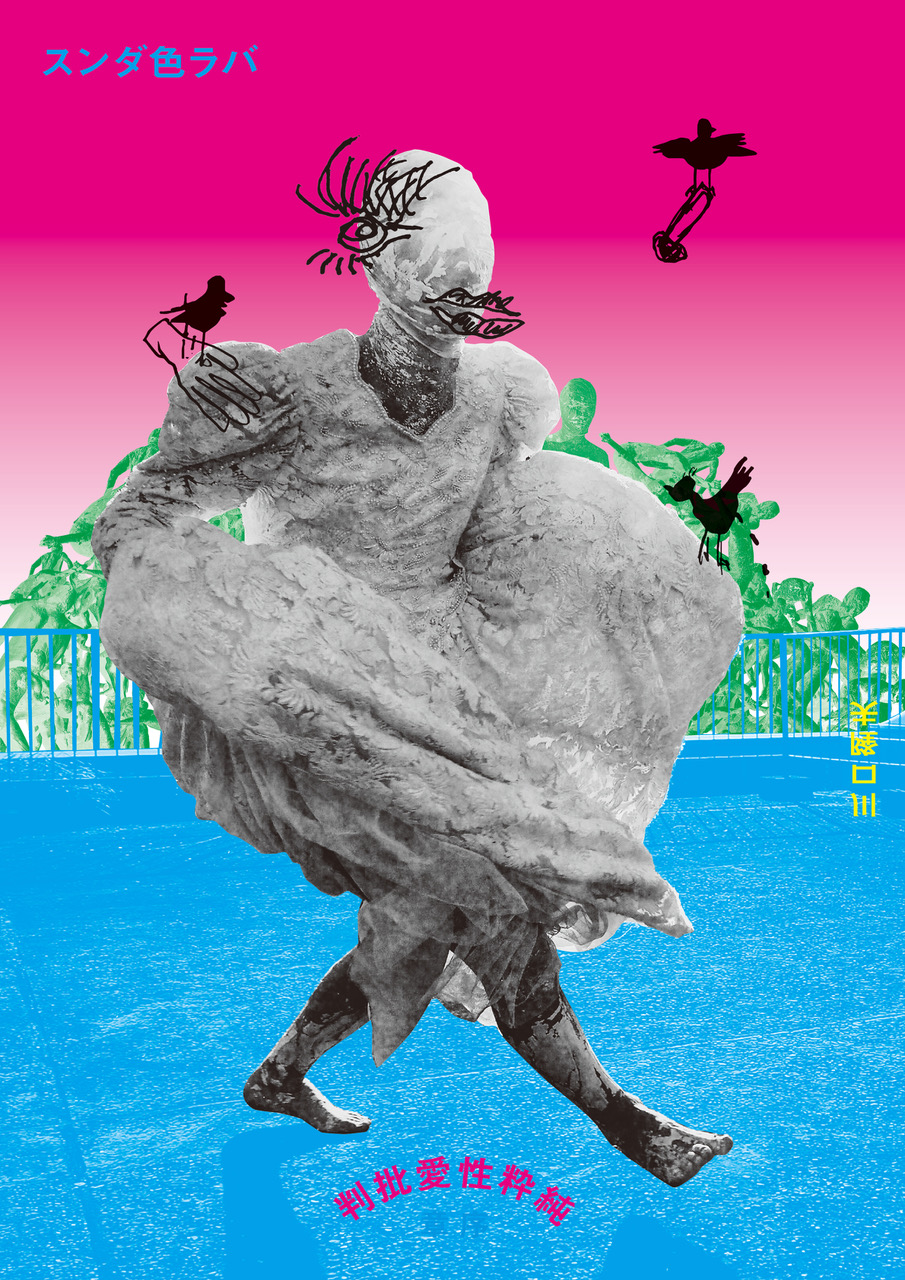
- Performer(s)
- Takao Kawaguchi
- Director/Choreographer
- Takao Kawaguchi
- Venue
- Goethe-Institut Tokyo
- Year performed
- 2022
-
Ridges in a Field under Moonshine
By moonlight I stand
The life of the seed, the seed of life / Will surely be sealed
At night, butterflies / cross the channel
It is not that I dance, but that / my body is invited to dance
As though there is an endless exchange between the countless full moons and blood
This is how the butoh should be danced.
(Bishop Yamada, The Butoh Chronicles III)
- Hoppo Butoh-ha Performance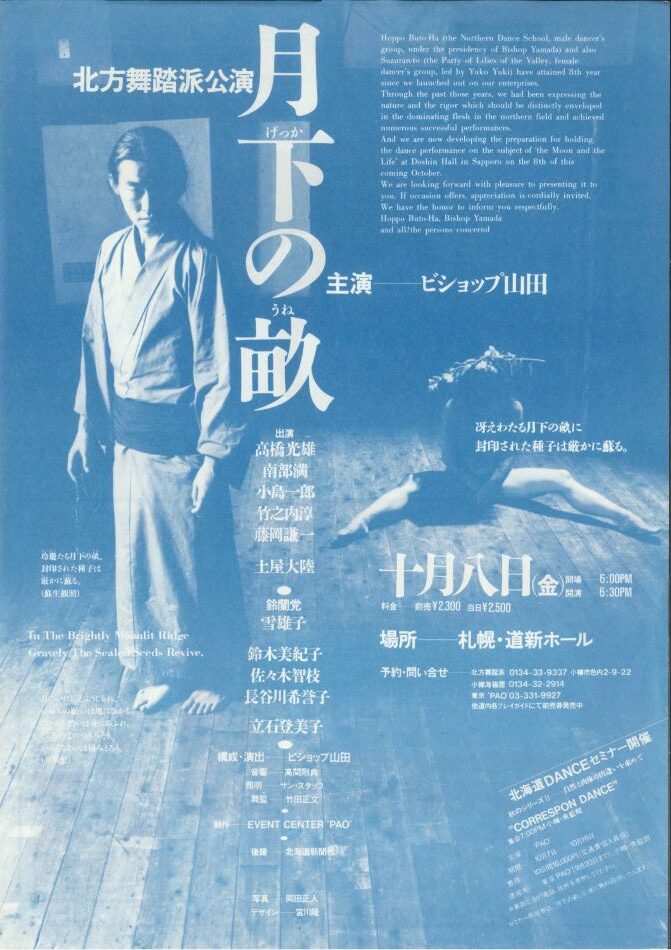
- Performer(s)
- Hoppo Butoh-ha
- Director/Choreographer
- Bishop Yamada
- Venue
- Sapporo DOSHIN HALL
- Year performed
- 1982
